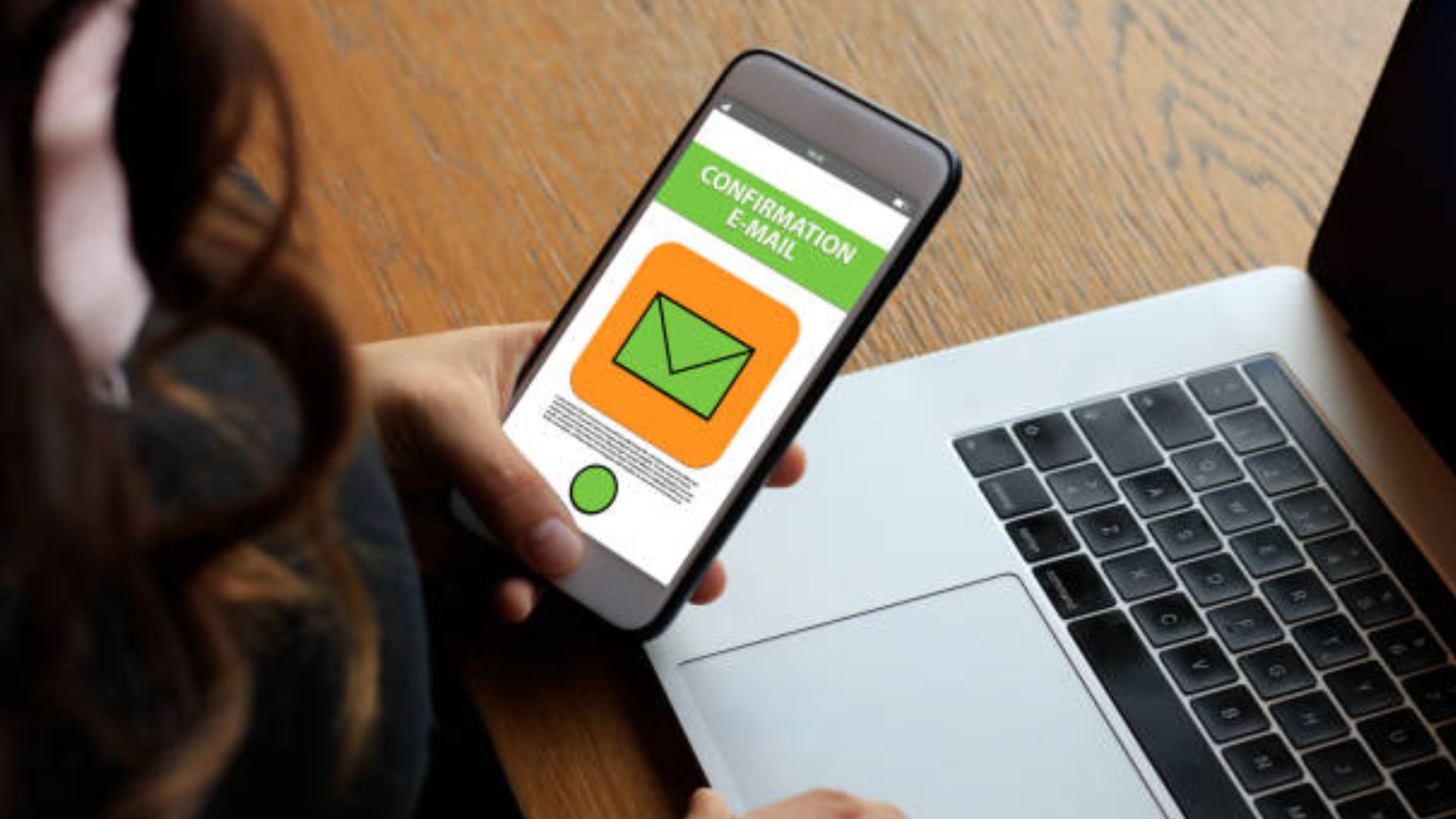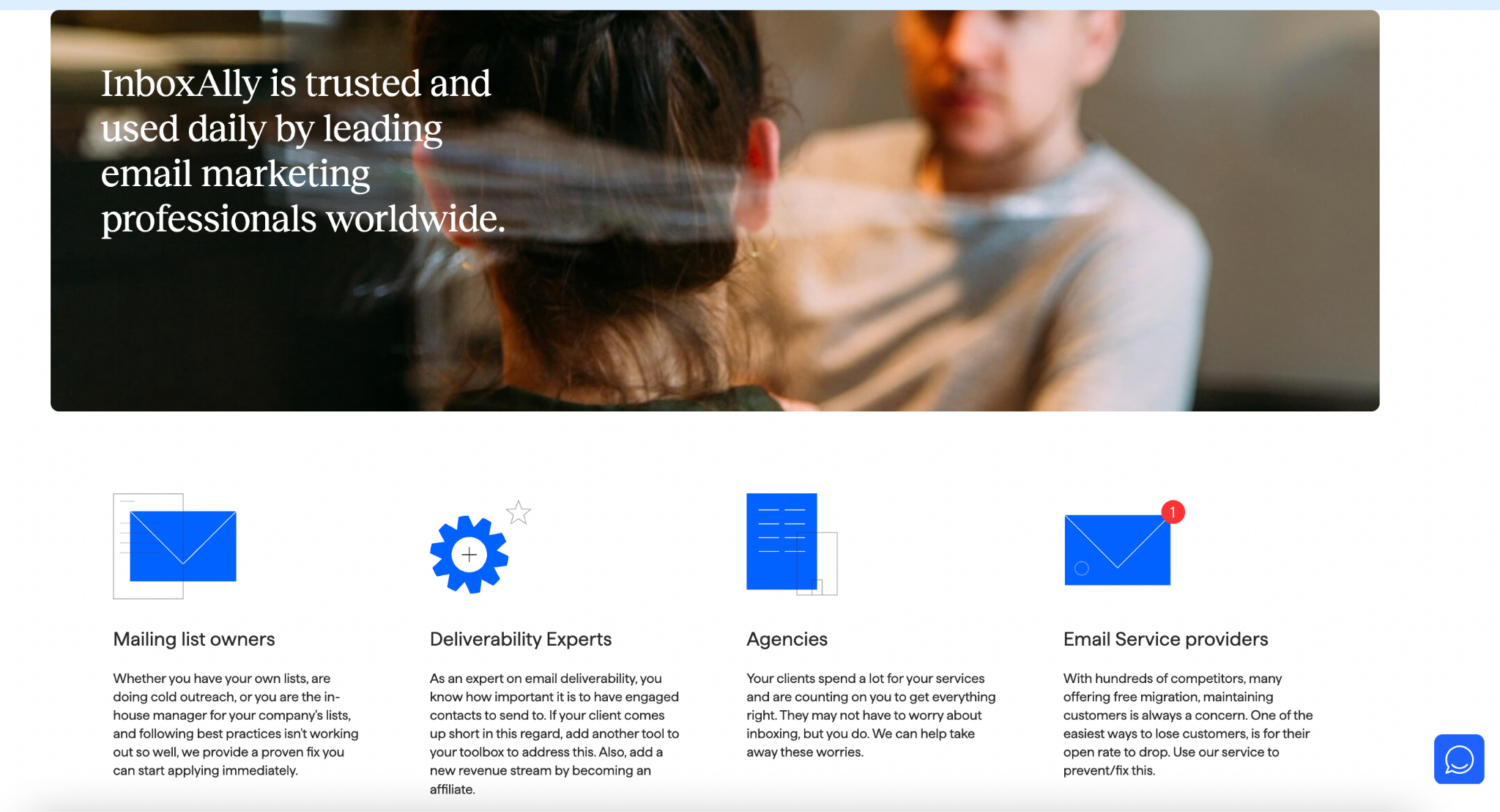Email marketing boosts sales by reaching a broad audience but can also annoy recipients with excessive messages. In this article, we’ll explore the different email marketing advantages and disadvantages to understand its impact better in today’s digital landscape.
We will examine how it helps businesses maintain customer engagement, build brand loyalty, and drive conversions. On the other hand, we’ll also address concerns like spam, unsubscribing, and the need for strategic content to avoid becoming bothersome.
Let’s dive in.
What Is Email Marketing?
Email marketing involves creating and sending messages to recipients’ email addresses to promote products and services or build relationships. These campaigns target potential and existing customers, implementing efficient email marketing strategies to engage the target audience.
To ensure deliverability, marketers must work within the guidelines set by internet service providers. An effective email marketing strategy also considers the target audience’s preferences, converting recipients into paying customers.
By creating email campaigns, businesses can foster connections, attract new customers, and reinforce loyalty among their existing clientele.
Email Marketing Campaigns vs. Spam: The Difference
Email marketing stands apart from spam through its well-targeted and value-driven approach. While successful email marketing campaigns aim to engage the target audience and attract new customers, spam relies on unsolicited messages that can irritate potential customers.
Moreover, email marketing uses efficient strategies to ensure messages reach the intended recipients. These strategies focus on building relationships and offering valuable content.
Read also: Cold Email vs Spam – The Key Differences
In contrast, spam often disregards these aspects, leading to its reputation as an intrusive and ineffective technique.
The disadvantages of email marketing, such as deliverability issues and the need for consent, outweigh its benefits when executed with precision.
Unlike traditional marketing methods, email campaigns are cost-efficient and enable personalized communication, making them an effective marketing strategy in today’s digital landscape.
12 Email Marketing Advantages
![]() Source: UnSplash
Source: UnSplash
1. Drives Traffic to Your Website
Email marketing effectively directs visitors to your website. By including links in emails, you encourage recipients to explore your site. Doing so also boosts your online presence and fosters interactions with potential customers. [1]
Combining engaging content and smartly placed links generate a steady flow of visitors. This increased traffic enhances your website’s visibility and provides a platform to showcase your products and connect with users.
2. Acts as an Additional Sales Channel
Email marketing adds to your regular sales methods, giving you more chances to show your products to people. Think of it as an extra way to boost sales. It’s like having another shop where you can display your products to customers.
By carefully crafting your emails, you can show what you’re selling and encourage people to buy. This extra sales method also helps you reach more customers and make more money.
Using it with your other sales methods, like having a physical store or selling online, creates a stronger overall sales plan. This way, you connect better with customers and bring in more sales.
3. Offers a High Return on Investment
When you use email marketing, your money and effort can return to you quickly. This is called “return on investment,” or ROI for short. Simply put, you get more from what you put in.
In a study from 2023, for each dollar invested in email marketing, marketers generate a remarkable $42, resulting in an impressive ROI of 4,200%. [2]
Email marketing doesn’t need much money but can bring you more customers and sales. They’re more likely to be interested because you send personalized emails to the right people.
This also means you spend less on reaching the right audience.
When interested people buy from you, the money you make can be a lot more than what you spend on sending emails.
For marketers looking to refine their strategies and achieve similar results, exploring email marketing blogs can offer valuable insights and tips.
4. Manageable and Easily Trackable

After sending emails, it’s essential to see what happens next. You can find out who opened the emails, your click-through rates, and more. This data helps you know if people are interested in what you’re sharing. [3]
Using tools for email marketing also makes everything easy to handle. You can plan when to send emails, create them quickly, and even set things up to send automatically.
Watching the numbers also helps you figure out what’s practical. You can focus on similar things later if more people click a specific link. It’s like a map guiding you to success in your email marketing efforts.
Lastly, tracking is vital for making smart choices based on factual information. This helps you save money and make better business decisions.
5. Cost-Efficient
Compared to other marketing strategies, email marketing is cost-effective. It also builds brand recognition and enhances business communication.
Unlike some other marketing tactics, emails usually get delivered to your recipients. This avoids the cost of pay-per-click advertising and the annoyance of unwanted messages that can come with paid ads.
Using email marketing also lets you effortlessly reach international customers without high costs. It’s an efficient strategy that targets your audience directly. With a well-thought-out email marketing campaign, you can save money while effectively connecting with your audience.
6. Better Than Postal Mail
Compared to traditional mail, email marketing streamlines business growth. It’s quick and less costly, allowing you to plan for future campaigns and provide brand-related information promptly. The immediate nature of email messages engages genuinely interested recipients, fostering lead generation.
Moreover, email’s sharing ability extends your reach, promoting your content beyond the original audience. This also makes email marketing a modern, effective tool that surpasses the limitations of traditional mail, driving business success.
Read also: Email Marketing vs Direct Mail
7. Access to Custom Designed Email Templates
Crafting a successful email marketing campaign requires strategic planning. With email campaigns, you gain access to professionally designed templates, which helps create engaging messages.
These templates simplify the process of crafting visually appealing and coherent content. They also ensure a consistent brand image across emails, promoting brand recognition.
Additionally, using custom templates enhances your email marketing strategy’s efficiency. You can tailor the content to your audience while the template handles the design elements. This resourcefulness saves time and maximizes the impact of your marketing messages.
Ultimately, using custom-designed templates improves the effectiveness of your email campaigns. As a result, this contributes to better engagement and higher success rates.
8. Customers Check Their Emails Everyday

When planning an email campaign, consider that people check their emails daily. This consistent habit provides a valuable opportunity for businesses to connect with their audience.
Given the frequency of mobile phones, emails are accessible on the go. This convenience also further emphasizes the importance of crafting engaging email content. Effective email campaigns capitalize on this daily interaction by offering relevant and enticing information.
Developing an efficient email marketing strategy that aligns with your audience’s daily routine can increase engagement rates.
9. Helps You Market With a Personal Touch
Email campaigns allow you to gather data about your subscribers, helping you segment your audience based on preferences. This segmentation enables you to send relevant content to different groups. You’ll also likely catch their attention and prompt action by addressing their needs and interests.
Moreover, personalization extends beyond using their names; it’s about understanding what matters to them. Crafting an email that speaks directly to their concerns and desires strengthens your relationship with your subscribers.
Read also: Personalized Cold Email A List of Best Practices That Work in 2023
This approach boosts engagement and conversions, as people are more likely to respond positively to messages that resonate with their needs.
Ultimately, a personalized marketing strategy enhances the effectiveness of your email campaigns, fostering a deeper connection with your audience.
10. Strengthens Relationships With Your Consumers and Readers
Building reliable relationships is essential for long-term success. You establish a consistent connection when communicating with your customers regularly through email campaigns.
By sharing valuable information, tips, and updates, you demonstrate your commitment to their well-being. However, this engagement goes beyond promoting products – it’s about providing real value. Customers appreciate businesses that care about their needs.
Moreover, emails allow you to gather feedback and insights directly from your customers. This two-way communication creates a sense of partnership and mutual understanding. Responding to concerns and preferences also demonstrate that their opinions matter.
11. Automation-Friendly
Manually managing email campaigns can be time-consuming, but automation simplifies the process. Automation tools allow you to schedule emails in advance, ensuring timely delivery without constant supervision. [4]
Specific actions can trigger automated emails, such as a customer signing up or purchasing. Therefore, this personalized touch enhances customer engagement. Automation also allows you to segment your audience and send tailored content based on their behavior and preferences.
Additionally, automation lets you track how recipients interact with your emails, providing insights to improve your strategy.
12. Raises Brand Awareness
In a competitive market, standing out is crucial. Email campaigns provide a consistent and targeted way to showcase your brand. You communicate your brand’s values, mission, and offerings through carefully designed emails.
Consistency in branding elements, like colors and logos, reinforces recognition. With every email received, your brand’s identity becomes more ingrained in recipients’ minds.
Moreover, consistent engagement through email marketing keeps your brand alive in customers’ consciousness.
They’ll likely remember and trust your brand when consistently receiving relevant and valuable content. This trust is vital for attracting and retaining customers.
Additionally, satisfied customers who receive regular, quality communication are more likely to refer your brand to others. This word-of-mouth referral enhances brand awareness further.
10 Email Marketing Disadvantages

1. Requires a Large Audience to Convert Significant Sales
In email marketing, it’s essential to grasp the relationship between audience size and conversion rates. While having an extensive email list is valuable, it only automatically guarantees high sales conversions.
However, a bigger audience doesn’t necessarily translate to better results. Therefore, focusing on a targeted audience is critical. Sending emails to people genuinely interested in your content or products increases the likelihood of conversions.
As the saying goes, quality over quantity matters. Tailor your content to resonate with your specific audience, addressing their needs and preferences.
2. Typos Could Make You Look Less Intelligent
Typos and other grammatical errors can undermine your professionalism and credibility. A single mistake can also make your brand appear less intelligent. Therefore, regular proofreading and editing are essential to maintain a polished image.
3. Deliverability Challenges
Navigating email marketing includes understanding deliverability challenges that can impact your campaign’s effectiveness. Emails might not reach recipients due to spam filters, technical glitches, or other factors.
So, adhere to best practices to overcome these challenges. For instance, avoid spammy language and regularly clean your email list to remove inactive or invalid addresses. [5]
In addition, test your emails across various platforms and devices to ensure consistent delivery. Monitoring deliverability rates and engagement metrics also provide insights into the health of your campaign.
Ensuring that your emails land in recipients’ inboxes is vital for successful email marketing. You can do this by using a deliverability tool like InboxAlly.
InboxAlly reshapes your sender reputation using unique seed emails and intelligent engagement techniques. It also ensures that inbox providers recognize your emails as valuable content, significantly reducing the chances of ending up in spam folders.
Through consistent positive interactions and improved engagement rates, InboxAlly’s approach guides your emails to the primary inbox, resulting in higher open and click-through rates.
4. Overcoming Email Fatigue
When subscribers receive too many emails, they become disengaged or opt out of your list. Therefore, balancing staying in touch and overwhelming your audience is essential.
To combat email fatigue, focus on providing value in every message. Send emails with relevant and valuable content that resonates with your audience’s interests.
In addition, segment your list to tailor content based on subscriber preferences. Allow subscribers to choose their email frequency to stay engaged without feeling overwhelmed.
5. Privacy Concerns
As people become more private, balancing personalization and respecting subscribers’ privacy is crucial. To address privacy concerns effectively, be transparent about data usage and storage practices in your privacy policy.
Additionally, ask for explicit consent before sending marketing emails and provide an easy way for subscribers to opt out. Implementing strong data security measures protects sensitive information.
Lastly, customize your content while being respectful of subscribers’ privacy choices. Avoid overly intrusive personalization and ensure that your emails provide clear value.
6. Design Limitations
Email design varies across platforms and devices, making creating visually appealing and responsive emails essential.
To navigate design challenges, prioritize responsive design principles. Next, craft emails that adapt seamlessly to different screen sizes and email clients. Lastly, use a clean layout, concise content, and compelling visuals to convey your message effectively.
Use pre-tested templates to streamline the design process and ensure consistent branding. Regularly test emails on various devices and platforms to identify design distinctions and make necessary adjustments.
7. High Competition

With inboxes flooded, your emails must capture the recipients’ attention quickly. To address this, focus on crafting compelling subject lines. A concise and intriguing subject line piques curiosity and entices recipients to open your emails.
Additionally, create relevant content that resonates with your audience’s interests. Personalize your emails based on subscriber preferences and behaviors. Tailored content stands a better chance of standing out in a crowded inbox.
Lastly, experiment with A/B testing to identify the content formats and strategies that give the best results.
8. Email Lists May Decay Over Time
Over time, email lists can become outdated as subscribers change email addresses or lose interest.
To manage decaying email lists effectively, do regular list maintenance. Next, remove inactive or unengaged subscribers to ensure a high-quality and engaged audience. Encourage subscribers as well to update their preferences and contact information.
Implement strategies to re-engage inactive subscribers, such as targeted re-engagement campaigns. Segment your list based on engagement levels to tailor content and rekindle interest.
Lastly, regularly monitor your list’s performance metrics, such as open and click-through rates, to assess its health.
9. Technical Issues
Broken links, formatting problems, or images can impact your campaign’s effectiveness. Rigorous testing before sending ensures a glitch-free experience for recipients.
Regular quality checks and testing across various devices and platforms maintain a polished presentation. Ensure that emails function as intended to prioritize user experience.
10. Limited Interaction
While recipients can click links and respond, it lacks the immediacy of live chat or social media. So, use engaging content and clear calls to action to encourage interaction. Combine interactive elements like polls or surveys to boost engagement.
In addition, combine email marketing with other channels like social media. While email delivers content effectively, building real-time conversations requires additional channels.
Wrapping Up

Email marketing offers a powerful means to connect with your audience, drive traffic, and foster customer relationships. Its targeted approach, cost-effectiveness, and automation capabilities enhance marketing strategies.
However, it comes with challenges like privacy concerns, competition, and design limitations. Therefore, recognizing both its advantages and disadvantages is essential for effective implementation.
By leveraging its strengths and addressing its limitations, email marketing can be a powerful tool for nurturing engagement, conversions, and business growth in today’s business world.
References:
[1] https://www.markettailor.io/blog/how-to-use-email-marketing-to-drive-website-traffic
[2] https://www.luisazhou.com/blog/email-marketing-roi-statistics/#:~:
[3] https://www.forbes.com/advisor/business/software/best-email-marketing-software/
